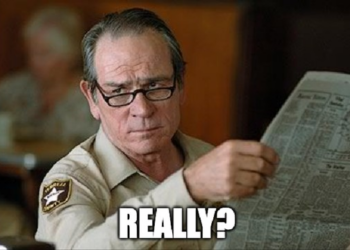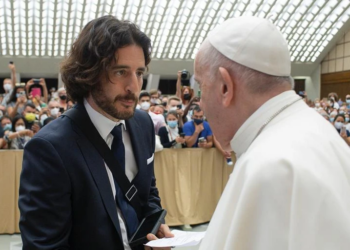Dr Patrick English is Director of Political Analytics at YouGov and their spokesman on political research.
The Canadian snap election is now just two weeks away, and over the course of this year we have witnessed one of the greatest polling turnarounds in history. From looking in existential danger just a few months ago, many now expect the incumbent Liberal party to win. We at YouGov will be producing an MRP projection of the race next week.
As recently ago as January this year, the Canadian Conservatives were posting leads of over 20 points against the incumbent Canadian Liberal party in vote intention polling.
Justin Trudeau, then Prime Minister and Liberal Party leader, was forced into a resignation of both posts, and a Liberal leadership contest kicked off against what would prove to be the mother of all political backdrops for a Canadian election – the return of Donald Trump to the White House.
The Liberals have rocketed from around 20 per cent of vote intention, with the left-wing New Democratic Party (NDP) threatening to relegate them to third place when Trudeau resigned, up to over 40 per cent now, passing the Conservatives on their own way down as they themselves dropped from around 45 per cent of vote intention to just over 35 per cent now.
It is now the Liberals under new leader Mark Carney who are posting sizeable and consistent polling leads against the Conservatives.
So, what exactly happened? How did a Conservative party who seemed to have united a broad and unbeatable coalition of Canadians, stretching from younger voters concerned about issues like housing to lower- to middle- income voters concerned about inflation to traditional conservatives in places like Alberta and suburban Ontario, end up being leapfrogged by their main rivals for government in such spectacular fashion?
The explanation I have to offer has three main components.
Firstly, the exogenous, completely uncontrollable (as far as Poilievre and the Conservatives are concerned) factor of Trump’s return to the White House and his subsequent actions and positions toward Canada sent shockwaves through the country.
Almost overnight, the relationship between the US and Canada went from productive and concerted to hostile and frayed. Trump spoke of ‘making Canada the 51st state’ in words which, understandably, went down like a lead balloon across the country. Our latest YouGov Canada polling suggests that 82 per cent of Canadians oppose that suggestion.
All of which produced a ‘rally around the flag’ effect for the Liberals, who as the incumbent government were able to step up and take action on what had become the most pressing issue for voters up and down the country. Action which, according to our polling, has well aligned with Canadian demands and expectations.
Secondly, the Liberals made a quick and effective detoxification of their brand by removing the hugely unpopular Justin Trudeau, who’s net favourability dropped to a record low in late 2024 of -52 points, according to pollster Angus Reid.
Mark Carney, on the other hand, has a positive net favourability rating, most recently recorded by Angus Reid at +15 points. This change in leader from a deeply unpopular to a relatively well viewed figure was also a significant factor in the polling turnaround for the Liberals.
Thirdly, while Pierre Poilievre looked positively rosy in the court of public opinion compared to Trudeau, the Conservative leader was himself never actually that popular.
Even during the height of the Conservative party polling powers at the turn of last year, when they opened up 20-, 25-point leads, Poilievre’s personal favourability ratings remained underwater at around -20.
That is to say that the Conservatives were polling so well despite their leader not being popular, not because of any Poilievre popularity. But at that time, Poilievre was significantly more liked that Trudeau, so the fact that he was not popular himself did not so much matter.
Now, with Trudeau removed from the equation, Poilievre’s ratings look poor in comparison to Carney, with the current prime minister leading his challenger by over 40 points on this metric.
Poilievre’s ratings have actually decreased somewhat lately, concurrent with accusations of he and his Conservative party’s campaign being “too Trump like” – an obvious and strong red flag (no pun intended) in a post-January 2025 Canadian political system.
All of which is to say that Poilievre and the Conservatives did not so much as walk themselves into the tricky position they now find themselves, but have been mostly landed in it by rapid changes in circumstance and exposure of weaknesses which previously did not so much into the ballot equation.
But while the Liberal turnaround is very real and very strong, and they are certainly in the driving seat ahead of the vote at the end of this month, if we look beyond the horserace polling it is quite clear that there remains a lot to play for in this election.
The latest YouGov Canada polling suggests that ‘US-Canada relations’ is the top issue that Canadians believe is facing their country today, with 50 per cent of respondents picking this option as one of their three top issues from a list of 26 possible options.
This is an area on which the Liberals dominate public trust, according to the same YouGov polling. While 41 per cent of Canadians trust Mark Carney most to handle the US-Canada issue, just 26 per cent back Pierre Poilievre.
But not fair behind in second and third place are two issues on which the Conservatives are much more competitive: housing (37 per cent) and inflation (33 per cent).
The two men vying for prime minister are effectively tied on who Canadians trust more to handle the issue of housing, with 27 per cent trusting Carney more but 29 per cent trusting Poilievre more.
The Canadian public do trust the Liberals leader to handle inflation more so than do the Conservative leader by 37 per cent to 28 per cent, but that 9-point gap is nowhere near as wide as it is on the issue of the US-Canada relationship (15).
All of which raises an interesting prospect that ‘how to handle Donald Trump’ is not the ballot question which Canadians answer on April 28, and Canadians instead end up voting on issues which Poilievre and the Conservatives are much more competitive, such as inflation and housing, then this election may not be so much of a foregone conclusion.
For now however, it appears that Trump and the US remain the most prominent issue in the minds of Canadian voters, leaving Poilievre and the Conservatives trying to fight the election they would like to have – and the one they thought they were having as recently as January – versus the one they actually face.


![NYC Tourist Helicopter Falls into Hudson River, Siemens Executive and Family Among Those Killed [WATCH]](https://www.right2024.com/wp-content/uploads/2025/04/NYC-Tourist-Helicopter-Falls-into-Hudson-River-Siemens-Executive-and-350x250.jpg)






![Green Day’s Cringe Trump Diss Ends in Fire and Evacuation [WATCH]](https://www.right2024.com/wp-content/uploads/2025/04/Green-Days-Cringe-Trump-Diss-Ends-in-Fire-and-Evacuation-350x250.jpg)
![Red Sox Fan Makes the ‘Catch of the Day’ with Unconventional ‘Glove’ [WATCH]](https://www.right2024.com/wp-content/uploads/2025/04/Red-Sox-Fan-Makes-the-‘Catch-of-the-Day-with-350x250.jpg)






